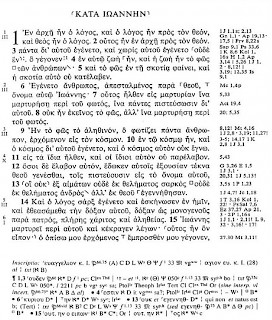Conjecture
Conjecture: a classicist's proposal to explain a difficult part of an ancient text (a crux).

In his book about Alexander the Great, the Graeco-Roman historian Arrian mentions a canal near Babylon. In the manuscripts, it is called Pollakopas or Pollakottas.note A problem like this is called a "crux" and a classicist who is preparing a text-critical edition of Arrian’s history, must make a choice.
Fortunately, that is not very difficult, because several cuneiform texts refer to the canal and mention its correct name: Pallukatu. We may assume that Arrian used the correct form and that the variant is due to a scribal error. After all, the difference between a Greek π and ττ is not very great. A classicist will consider Pollakottas to be correct.
However, he cannot ignore Pollakopas. His aim is not to reconstruct what the text is supposed to be, but to establish what the author actually wrote. Since it cannot be excluded that Arrian made a mistake and wrote Pollakopas, and that a copyist tacitly improved the text, both readings are relevant. The only difference is that Pollakottas is more plausible. As a consequence, in a modern edition, one word is used in the main text and the other is mentioned in the “critical apparatus”, which contains all variants in manuscripts that cannot be eliminated.
This was an easy example. One of the two spellings was nonsensical, while the other rendered a known word. But things can get complicated. For example, it is possible that a classicist has to cope with a word without parallel. This often happens with personal names and toponyms.
The Peutinger Map, for example, refers to a town along the river Rhine that is called Lefevanum, a strange word without meaning or parallel. It may, however, be a poor rendering of Haevae Fanum, “sanctuary of Haeva”, a known deity that was worshipped in the Rhineland. This is a tempting reconstruction and a classicist can mention this in a note or, if he is extremely confident, even in the main text. This is called a “conjecture”. In this example, we’re dealing with letters only, but sometimes, classicists offer readings of complete sentences.